Jharkhand IFS Officer Helps 2 Villages Turn Self-Reliant, Earn 5 Times More Income
“This programme can not only thrive in Jharkhand, but all over India,” says Siddharth Tripathi, a 1999-batch IFS officer.
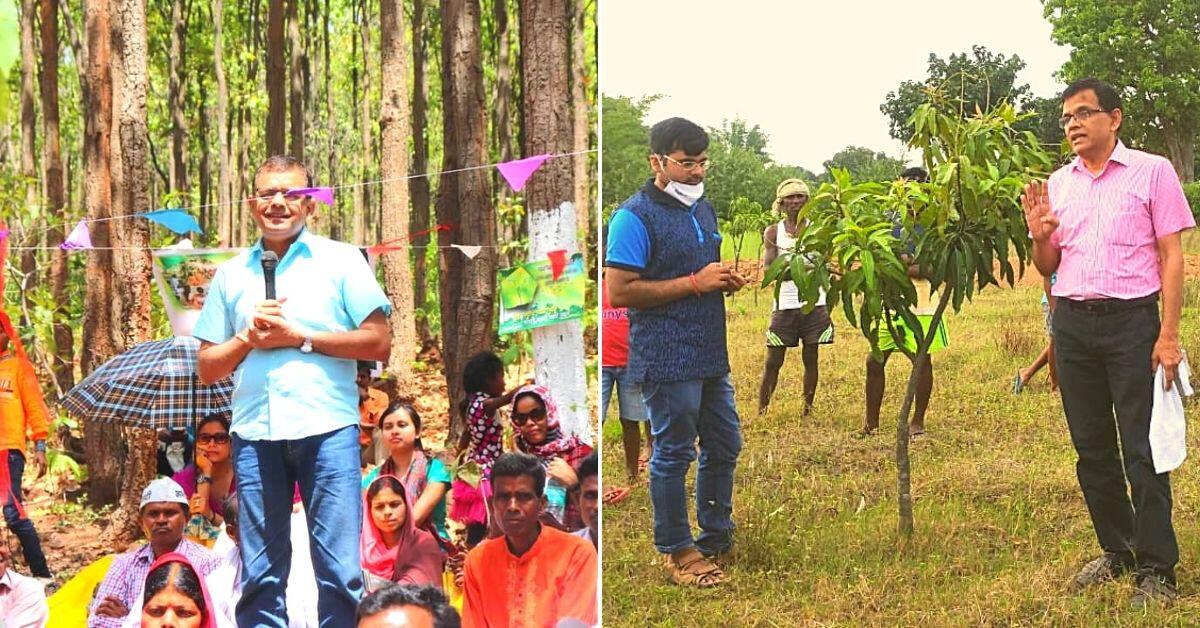
Every day at around 4.30 am, the 600 residents of Ara and Keram, neighbouring villages in Jharkhand’s Ranchi district, wake up to a voice that announces the start of the day.
For the next hour or so, everyone in these villages picks up a broom and cleans their surroundings. There is barely any litter, because women have erected 60 contraptions made of bamboo that are used as dustbins. Once that is done, a few tutors conduct classes for children in both villages till they leave for school, while others go about their daily work on their farms.
Once ridden by economic underdevelopment, poverty and alcoholism, these villages today are shining examples of self-reliance. In 2017, when the only public school in the area had just two ‘para’ teachers, residents pooled their money together and appointed two college graduates from their villages to assist students on a monthly stipend of Rs 4,000.
The same year, residents, particularly the women, came together to impose total prohibition when they realised that alcoholism, particularly among the men who consumed locally-made hooch, was ravaging families.
Finally, the residents constructed 700 indigenously-designed loose boulder structures (LBS) check dams worth Rs 1.75 crore. About 180 villagers worked non-stop for 75 days to construct these check-dams to conserve water, recharge groundwater tables and prevent soil erosion. These initiatives were undertaken with little public spending except for the odd implementation of MGNREGA for development works or livelihood generation schemes for poultry farming or fisheries.
In a span of four years, average incomes in the village have risen nearly five times, and besides farming, residents have found opportunities in a variety of works including dairy, poultry and goat farming. Many have their own small retail shops as well.
Underpinning these efforts, which have revolutionised these villages in little less than four years is the revival of gram sabhas (village assembly), where residents regularly discuss and arbitrate on various issues concerning them, long term official engagement, participation of women and the spirit of ‘Shramdaan’ (voluntary participation in development works).
In a recent Mann Ki Baat episode, Prime Minister Narendra Modi even talked about the transformation happening in Ara and Keram.
None of this would have been possible without the intervention of 1999-batch Indian Forest Service officer Siddharth Tripathi, who for the past four and a half years has served as Commissioner, MGNREGA, in Jharkhand.

Finding Solutions to Poverty Alleviation in Jharkhand
With a masters in civil engineering from IIT Roorkee, Siddharth began his tenure in Jharkhand at the turn of the 21st century.
“During my first posting at Chaibasa (West Singhbhum district) back in 2001, I saw grinding poverty for the first time in my life — of the type we only read about in books. As a forest officer traversing through the interiors of the Saranda forest, I saw villages without basic access to drinking water, healthcare, education and nutrition. It was heartbreaking to see such abject poverty up close in these villages,” says Siddharth, speaking to The Better India.
Despite being a civil servant, who was expected to implement various rural development schemes, he had no genuine idea of how to address poverty.
After postings in Chaibasa and Hazaribagh, in January 2004 he was posted as Divisional Forest Officer (DFO) in Koderma.
Based on his administrative experience of dealing with poverty in Chaibasa and Hazaribagh, he began a series of experiments across different villages in Koderma district to develop a model which could one day make them self-reliant instead of being dependent on governments, which had anyway done a shoddy job of ensuring genuine economic development in these parts.
“There was a lot of skepticism amongst my friends, batchmates and colleagues when I discussed my experiments in addressing rural poverty in Jharkhand. They would often ask, ‘Itne Saare Gandhi Kahan Se Aayenge’ (Where will you find so many Mahatma Gandhis to develop India’s 6.5 lakh villages?)” he recalls.

Failed Experiments
The first village he visited was Chourahi, which is barely 7 km away from the district headquarters of Jhumri Telaiya, the former mica capital of the world. He would meet with its residents (spread across 35 households) every weekend to discuss their requirements. In the first six months he facilitated the construction of a few irrigation wells and introduced some modern farming practices.
But progress was very slow, and further decelerated by the rampant alcoholism in the village.
“Every household was engaged in the manufacturing and distilling of illicit mahua liquor in the confines of their backyard, which was transported in large cans to Jhumri Telaiya where labourers with wages to spend would buy them. I couldn’t convince residents to give up illegal hooch. Unable to see any progress, I gave up this experiment, and moved onto Dhab, a massive village with about 2,000 households known for its mica mines,” recalls Siddharth.
For the next 20 months, he would spend his weekends at the Naxal-affected village, helping reinvigorate the institution of gram sabhas where issues pertaining to the village were discussed and decisions taken on the same, introducing prohibition of liquor and volunteer-driven developmental works.
However, it all came to a halt after the brutal murder of a young teenage boy by members of a high caste community.
“This boy was in a relationship with a girl from another caste, and her family members had murdered and hanged him. The deceased boy’s mother was a widow, and in the FIR charged under Section 302 (murder) of the Indian Penal Code, she had named the girl’s family and pretty much everyone else she had a grudge against in the village. Fearing police action, many residents fled the village for Jhumri Talaiya, while others left for big cities like Mumbai for work and to escape possible jail time. Seeing this exodus, I had to abandon this experiment with a heavy heart. All my efforts had come to nothing,” he recalls.
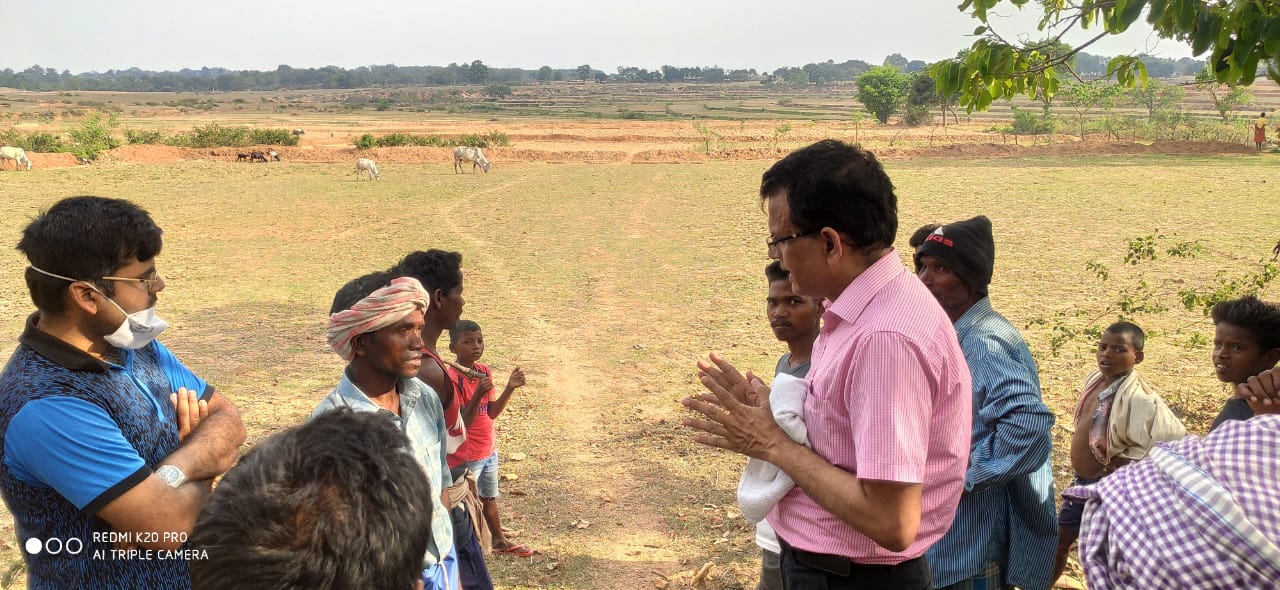
Success, Finally
However, opportunity arose for a successful experiment in a remote adivasi-inhabited village called Simarkundi surrounded by 1800 acres of jungle which wasn’t even accessible by bicycle — one had to walk 7 km through a dense jungle to reach it. Villagers here were either employed as manual labour in stone mining operations, or in the illegal felling of timber.
Despite over two years as DFO of Koderma, he hadn’t visited the Naxal-affected village yet. He received constant reminders from officials in Ranchi to spend the unutilised Rs 1.5 lakh in government-sanctioned funds dedicated to the village. In one meeting, he asked the local range officer who often interacted with Simarkundi’s residents about what they needed.
What residents needed desperately was a drinking water well. To access water, they had to extract it by digging the dry river bed nearby which was then collected in earthen pots. Working with local officials, they sanctioned the construction of a 30-feet drinking water well at the cost of Rs 78,000. Wanting to see if there was any progress on constructing this well, Siddharth visited the village for the first time in January 2006 undertaking a two-hour trek.
“The well was almost complete, and done very well. And I fell in love with the village. Here I found a homogenous demographic profile, which I felt could succeed unlike my earlier experiments. After the well was constructed, I would visit it every weekend. Every Sunday, I would walk 14 km to the village back and forth. I made around 40 such visits on foot and after a few months villagers did some repair work on the forest tract, which allowed me to visit on a motorcycle. Today, you can visit the village in your car,” says Siddharth.
Within six months of his intervention, residents had voluntarily given up liquor through a resolution taken in their regular gram sabhas. There were about 40 households with 35 acres of farmland which would earn a total of just Rs 20,000 a year from farming when Siddharth first visited the village.
Today, residents earn Rs 47 lakh annually from farming and allied animal husbandry activities. In a village, where there wasn’t a single well from which one could drink from, today there isn’t even an inch which isn’t irrigated.
“There was significant improvement in farm practices. They stopped cutting timber from the forests and instead tied rakhis on trees. We successful addressed backward practices like child marriage, improved sanitation facilities, introduced regular collection of garbage, family planning and punitive measures against domestic violence, among other things. With assistance from MGNREGA, we constructed a kuccha road to the village, which after heavy rains the villagers would repair. All this change happened within two years,” he says.
Siddharth was transferred out of Koderma to Ranchi in 2008, but even then he would visit the village every Sunday for the next five years to ensure these changes were permanent.
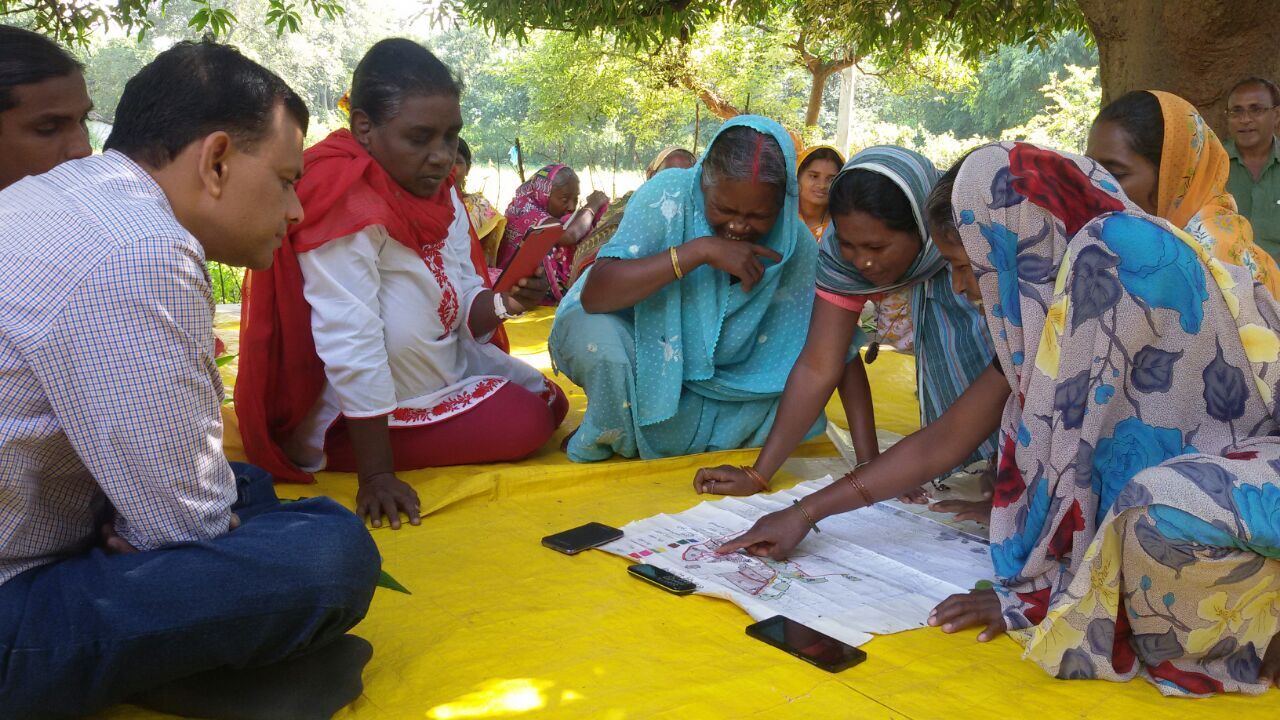
The Model
How does this happen? Siddharth outlines the following steps:
1. Invest time in the village: No change can happen if officials just sit in Delhi, district or block headquarters. For Ara, Keram and Simarkundi, Siddharth would spend every weekend engaging with its residents and understanding their needs.
2. Organise the village at the level of gram sabhas: “Out of India’s 6.5 lakh villages, there are hardly any where gram sabhas are held honestly and regularly. As a result, residents don’t spend adequate time to think, deliberate and discuss their problems,” says Siddharth.
3. Lok Shikshan: It’s imperative to respect the knowledge and wisdom of the people. Don’t impose your own thought or ideology and start from what the residents already know. As a result, they will have confidence about their own abilities and strengths. Once trust is established, some additional inputs will be given which will be readily accepted by them, says Siddharth. Under Lok Shikshan, the issue of cleanliness is taken up first.
The impact of engaging residents in cleanliness drives is immediately visible. These cleanliness drives are divided into five parts — clear out bushes along the village thoroughfare and fields, collect plastic waste, recycle grey water, construct compost pits far from residences and ensure basic sanitation facilities for an open-defecation free village.
Once residents engage in these activities for 10 continuous days or more, they don’t even recognise their own village. Roads become wider because the bushes have been cleared. Fields are free from bushes. All plastic is picked up and collected in bins. There is an SOP for all these processes, and the impact is so rapid that it generates public confidence.
“The tradition of ‘Shramdaan’ is often non-existent in our villages. However, when they engage in such cleanliness activities themselves, there is a surge in public confidence. My job is to instill a sense of dignity, pride and ownership of their own village. Educating them without dismissing their inputs and indigenous knowledge of their natural resources is also a vital part of the intervention. We do not want our village residents to turn into beggars wholly dependent on the government for survival. Within two to three months the environment in the village starts to change. People start to come together and unite,” says Siddharth.
Growing public confidence and ownership has a real bearing on how government schemes like MGNREGA are implemented in the village. Residents take complete ownership for any developmental works that happen from digging canals, constructing rainwater harvesting structures or check dams to building cattle sheds for their livestock.
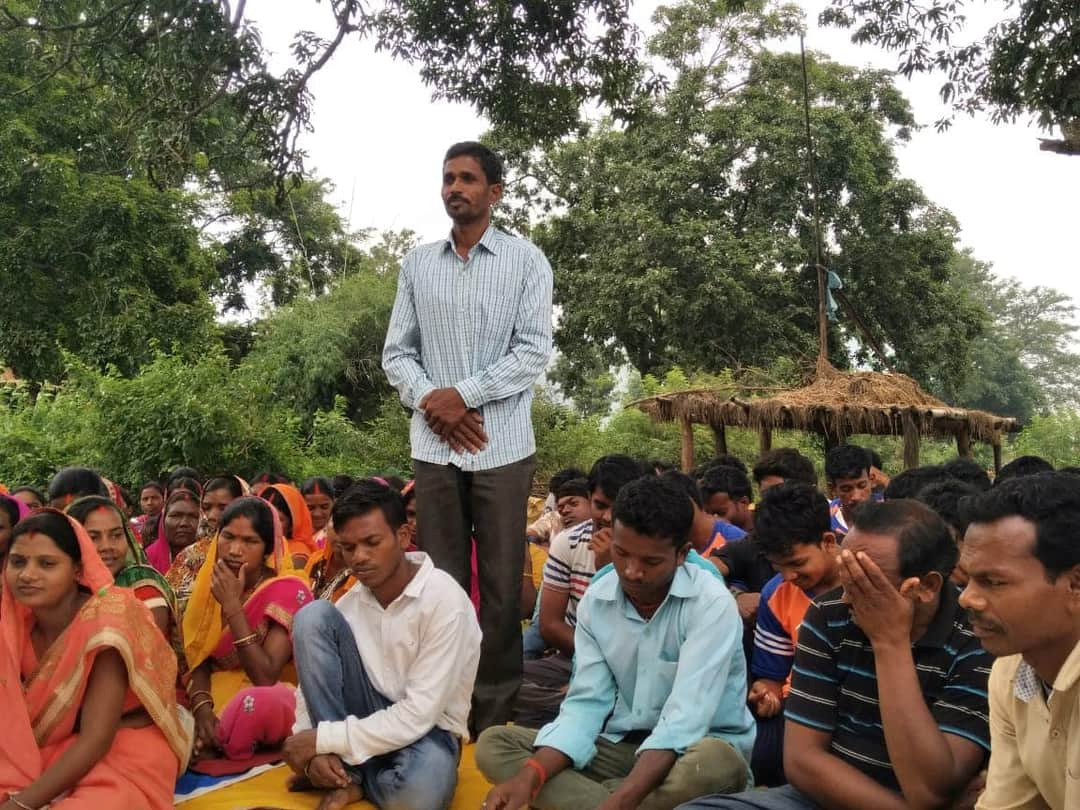
Success of Ara and Keram
“We start with social issues first. First and foremost, it’s imperative that regular gram sabhas are held on a weekly basis where everyone irrespective of gender will be present. Here the residents will discuss and deliberate on the issues concerning their village. We focus on issues which can be solved by the residents themselves and no outside or government support is required. For example, making their village liquor free, cleanliness in all forms, family planning, preventing child marriages, child labour, focussing on the education of young girls, addressing domestic violence and superstitions, etc,” says Siddharth.
After the above issues are addressed successfully, residents take up health, nutrition, livelihood, water, forest and agriculture-related issues.
“The first thing Siddharth Sir told me was to spend time with residents there, meet them, talk to them, understand their daily lives, their likes and dislikes and understand their social and environmental structure. While listening to them, I gave my inputs as well about how we can help them,” says Sunil Sharma, a former consultant with a private company in Ranchi, who has worked very closely with Siddharth in Ara and Keram since April 2016.
“After the said social issues are addressed, we would ask them what they need and through schemes like MGNREGA, helping them build roads, drinking water wells, canals, cattle sheds, goat sheds, check-dams and other developmental structures,” he adds.
Within a year, people came together through MGNREGA works on water and soil conservation, rainwater harvesting, and construction of cattle sheds, goat sheds, etc.
“Through these projects, we directed them to better livelihood options like poultry, goat farming and fisheries. In 2017-18, we constructed rainwater harvesting which raised water tables. From the agriculture department, we introduced drip irrigation to farmers as well, which allowed them to expand their acreage. Each farmland now grows about three crops at a time, and nearly 60 acres of their land is under drip irrigation,” says Sunil.
In the following year, they implemented the Shramdaan system, and constructed 700 LBS check-dams and planted saplings on barren forest land.

“Farmers who were once earning 3,000 per month are now earning about Rs 15,000 per month. One resident Ramesh Bedia, who built a cowshed for his cattle, now sells milk regularly besides farming,” he says.
“[The] shramdaan has played a key role in uniting the Gram Sabha. [Siddharth] Tripathi sir told us to also organise ‘Van Raksha Bandhan’ (tying a sacred thread to trees, vowing to protect them). He motivated us to shun tobacco and alcohol and persuaded the villagers to put their money to better use. There was no looking back after that,” says Gram Pradhan of Ara village Gopal Bedia, speaking to The New Indian Express.
“These two villages are shining examples of how if a gram (village) wants to do things on their own, nothing is impossible. No government scheme can succeed without people’s cooperation. The government has only backed their efforts through MGNREGA schemes and livelihood options like fisheries and poultry. But the people of the villages ensured actual implementation in the last one year,” said Manoj Kumar, the former deputy commissioner of Ranchi in an interview with the Telegraph in July 2017.

Replicating this Model in Other Villages in Jharkhand
Based on the success of turning Simarkundi, Ara and Keram into self-reliant villages, the government of Jharkhand asked Siddharth to pilot this model across all villages in Khunti district under the Deen Dayal Gram Swavalamban Yojana.
Commencing in September 2019, this model has been implemented in 80 villages. Despite Jharkhand’s Assembly elections and COVID-19, Siddharth claims that nearly 35 villages have achieved about 80% of the success seen in Ara and Keram.
However, what’s different about this model is the special emphasis on local women to engage in community mobilisation. This was introduced based on Siddharth’s learnings across the three villages, where he saw women taking charge of initiatives like prohibition of liquor, cleanliness drives and developmental works.
“In each district, we scout active women from a village or surrounding districts, who are called ‘Lok Preraks.’ We select them based on certain guidelines like they shouldn’t be nursing mothers, willingness to spend weeks away from home, speak in Hindi or the local dialect and quality articulation. For about 10 days, these women are trained at the block level in understanding key features of a village ranging from its demographic composition, natural surroundings and resources to community mobilisation,” says Sunil.
But their training doesn’t end there. After spending four weeks in a particular village, for which they receive an honorarium, they go back home and once again trained at the block level, where they present their learnings and pick up more valuable lessons for five days.
Out of these trained women, two women are kept in charge of a cluster of four villages. The advantage is that they can better communicate with other women, adolescent boys and girls in the village. Essentially, the work Siddharth had done in Simarkundi and Sunil in Ara and Keram, is now being done by these women.
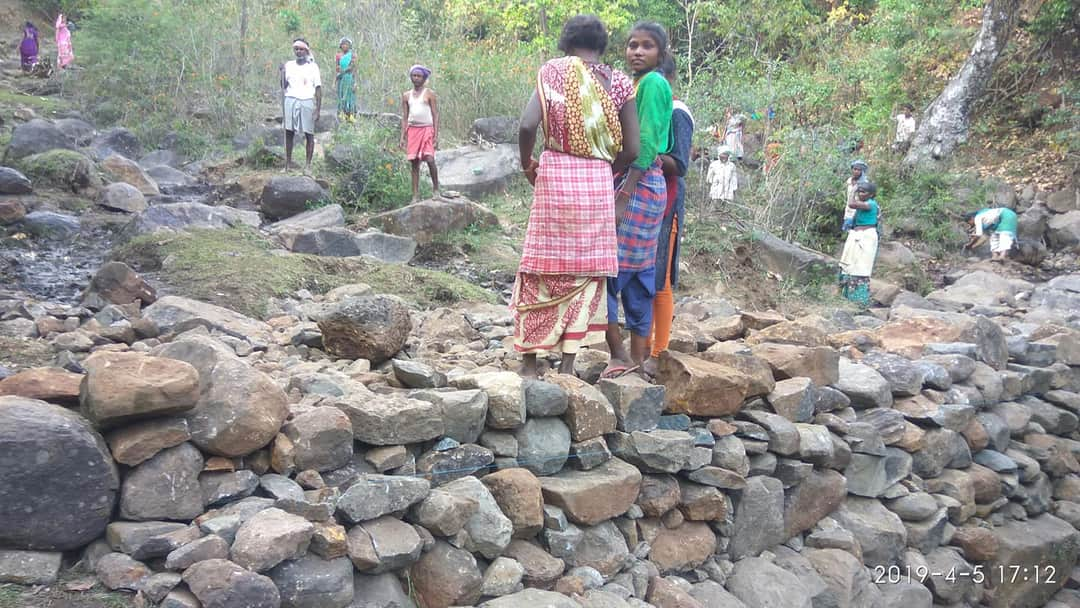
“Slowly, they start organising the gram sabha, encouraging people to join weekly meets where they discuss their problems. These women have barely completed middle school, but have shown a real capacity to mobilise these communities. While I would visit these villages once a week, these women are present 24/7. In the past week itself, 13 villages have become liquor free, which has freed up household incomes that can be spent more productively. When you’re genuinely invested in their development, residents start believing you and come on board,” says Siddharth.
“With the model I have formulated in these three villages, what we can see is that in two and a half years, a village becomes poverty-free, and their collective incomes increase five times. This programme can not only thrive in Jharkhand, but all over India,” he says.
(Edited by Gayatri Mishra)
Like this story? Or have something to share? Write to us: [email protected], or connect with us on Facebook and Twitter.
If you found our stories insightful, informative, or even just enjoyable, we invite you to consider making a voluntary payment to support the work we do at The Better India. Your contribution helps us continue producing quality content that educates, inspires, and drives positive change.
Choose one of the payment options below for your contribution-
By paying for the stories you value, you directly contribute to sustaining our efforts focused on making a difference in the world. Together, let’s ensure that impactful stories continue to be told and shared, enriching lives and communities alike.
Thank you for your support. Here are some frequently asked questions you might find helpful to know why you are contributing?


This story made me
-
97
-
121
-
89
-
167













